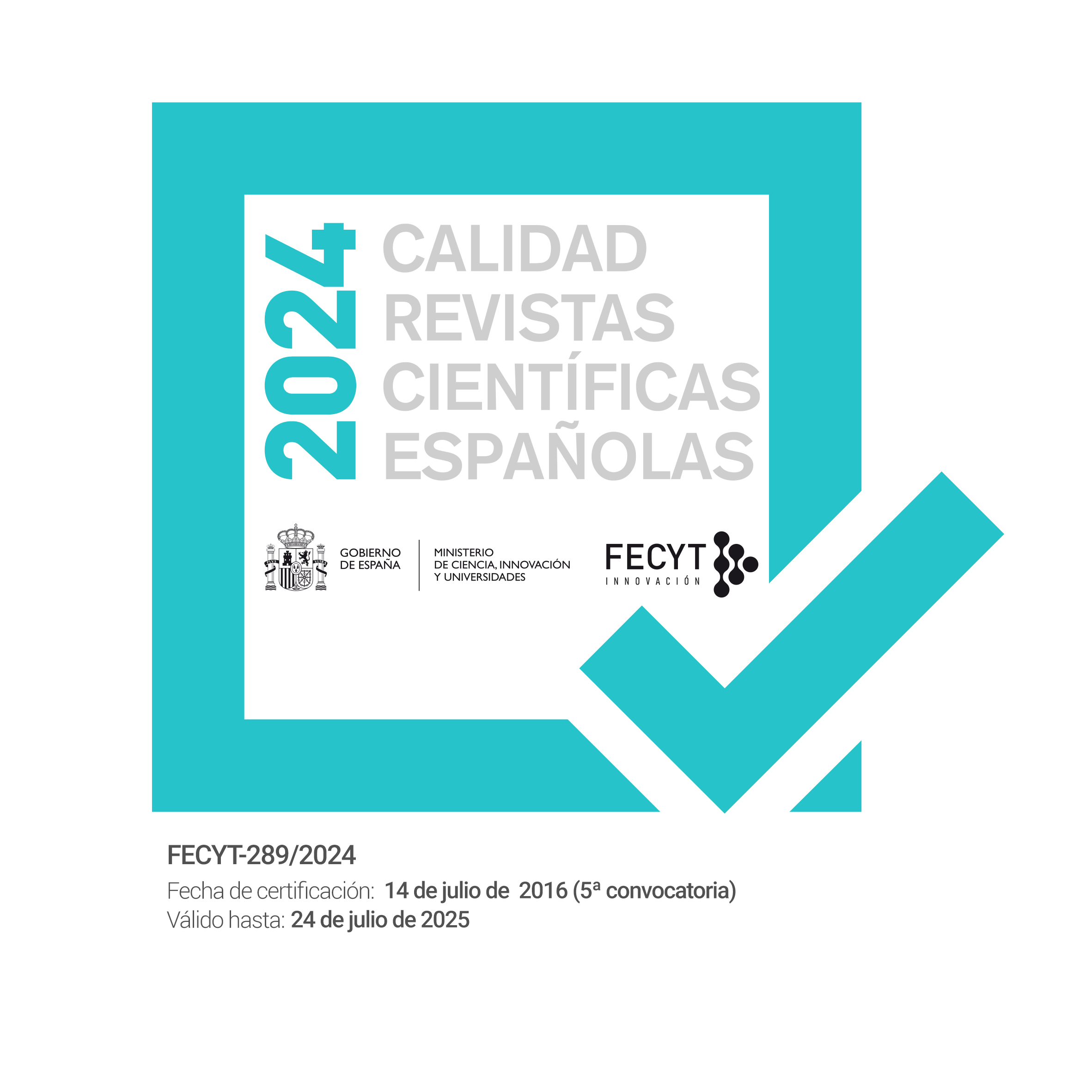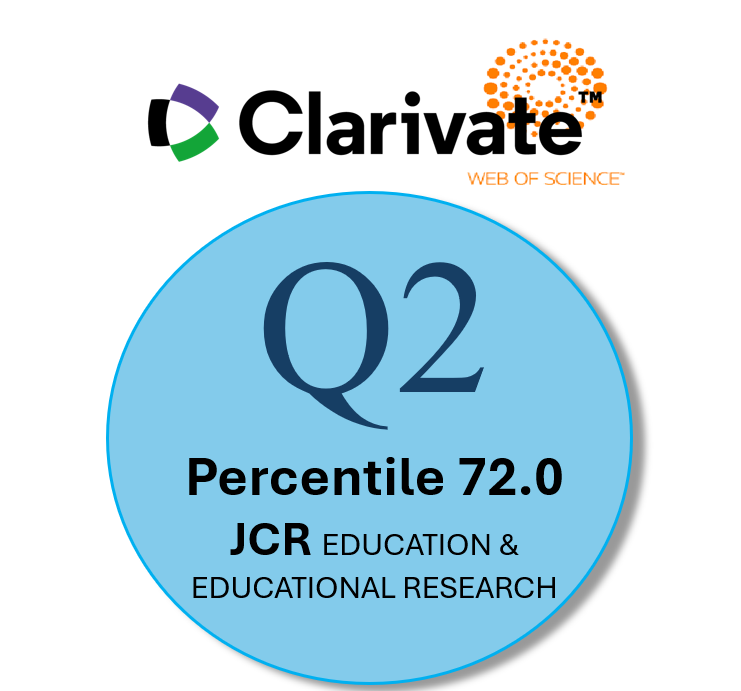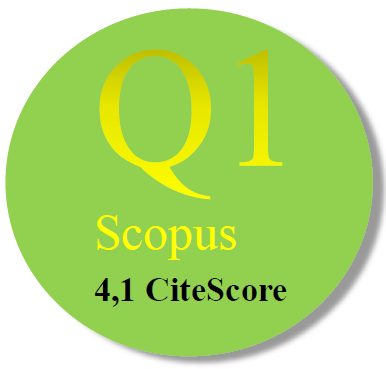Analysis of the Impact of the International Journal of Environmental Research and Public Health Delisting from the Web of Science on the Field of Public, Environmental and Occupational Health
Abstract
In March 2023, Clarivate delisted the flagship megajournal of the Multidisciplinary Digital Publishing Institute (MDPI), the International Journal of Environmental Research and Public Health (IJERPH), e-ISSN: 1660-4601, which had ranked second worldwide in open access output in 2022, shocking the entire scientific community. This affected thousands of researchers since research assessment experts and funders consider WoS a “whitelist” of journals. Among them, the ones in the field of public, environmental and occupational health stand out. In the previous years, attracted by its position in the first quartile (Q1) of the Journal Impact Factor (JIF) ranking of the Clarivate’s Journal Citation Reports (JCR), and taking advantage of a low article processing charge, a fast turnaround and a low rejection rate, they published around 20 % of the area production indexed in WoS in IJERPH. This paper analyses the consequences of IJERPH’s delisting from WoS on the publishing dynamics of the area, making especial focus on its researchers’ output and its impact. Results show that, after IJERPH’s delisting, publications have not been reallocated within the area, losing more than 30 % of its output indexed in WoS in 2023. Moreover, neither megajournals of similar disciplines nor multidisciplinary ones absorbed the lost documents. Finally, even the frequent IJERPH’s authors lost half of their output indexed in WoS in 2023, degrading their JIF-Q1 presence (JCR 2022) in equal proportion.
Downloads
-
Abstract1211
-
PDF (Español (España))614
References
Ansede, M. (2023). La burbuja de las revistas científicas se traga millones de euros de dinero público. El País.
Aubert Bonn, N. y Bouter, L. (2023). Research Assessments Should Recognize Responsible Research Practices. Narrative Review of a Lively Debate and Promising Developments BT - Handbook of Bioethical Decisions. Volume II: Scientific Integrity and Institutional Ethics (E. Valdés y J. A. Lecaros (eds.); pp. 441–472). Springer International Publishing. https://doi.org/10.1007/978-3-031-29455-6_27
Aubert Bonn, N. y Pinxten, W. (2021). Advancing science or advancing careers? Researchers’ opinions on success indicators. PLOS ONE, 16(2), e0243664.
Binfield, P. (2013). Open access megajournals – have they changed everything? Creative Commons Blog. http://creativecommons.org.nz/2013/10/open-accessmegajournals-have-they-changed-everything/
Björk, B.-C. (2015). Have the “mega-journals” reached the limits to growth? PeerJ, 3, e981. https://doi.org/10.7717/peerj.981
Björk, B.-C. y Solomon, D. (2012). Open access versus subscription journals: a comparison of scientific impact. BMC Medicine, 10(1), 73. https://doi.org/10.1186/1741-7015-10-73
Brito, R. y Rodríguez-Navarro, A. (2019). Evaluating research and researchers by the journal impact factor: Is it better than coin flipping? Journal of Informetrics, 13(1), 314–324. https://doi.org/https://doi.org/10.1016/j.joi.2019.01.009
Clarivate. (2021a). Indicator Handbooks. Clarivate InCites Help. https://incites.help.clarivate.com/Content/Indicators-Handbook/ih-about.htm
Clarivate. (2021b). Journal Citation Reports Help. Clarivate. https://jcr.help.clarivate.com/Content/home.htm
Clarivate. (2021c). Web of Science Help. Clarivate. https://webofscience.help.clarivate.com/Content/home.htm
Clarivate. (2023). InCites Help. Clarivate. https://incites.help.clarivate.com/Content/home.htm
CoARA. (2022). The Agreement on Reforming Research Assessment. https://coara.eu/agreement/the-agreement-full-text/
Cortegiani, A., Manca, A., Lalu, M. y Moher, D. (2020). Inclusion of predatory journals in Scopus is inflating scholars’ metrics and advancing careers. En International journal of public health (Vol. 65, Issue 1, pp. 3–4). https://doi.org/10.1007/s00038-019-01318-w
Crosetto, P. (2023). MDPI_special_issues.
Dinis-Oliveira, R. J. (2022). Open-access Mega-journals in Health and Life Sciences: What Every Researcher needs to know about this Publishing Model. En Current drug research reviews (Vol. 14, Issue 1, pp. 3–5). https://doi.org/10.2174/2589977514666220209101713
Eckert, M. (2024). Safeguarding peer review to ensure quality at scale. Frontiers-Science News. https://www.frontiersin.org/news/2024/01/09/safeguarding-peer-review-to-ensure-quality-at-scale
Garfield, E. (2006). The History and Meaning of the Journal Impact Factor. JAMA, 295(1), 90–93. https://doi.org/10.1001/jama.295.1.90
Guerrero-Bote, V. P. y Moya-Anegón, F. (2012). A further step forward in measuring journals’ scientific prestige: The SJR2 indicator. Journal of Informetrics, 6(4), 674–688. https://doi.org/https://doi.org/10.1016/j.joi.2012.07.001
Hanson, M. (2023). MDPI mega-journal delisted by Clarivate / Web of Science. M.A. HANSON RESEARCH. https://mahansonresearch.weebly.com/blog/mdpi-mega-journal-delisted-by-clarivate-web-of-science
Hanson, M., Gomez Barreiro, P., Crosetto, P. y Brockington, D. (2023). The strain on scientific publishing. https://doi.org/10.48550/arXiv.2309.15884
Heaney, K. (2023). Unveiling the Journal Citation Reports 2023: Supporting research integrity with trusted tools and data. . Clarivate. https://clarivate.com/blog/unveiling-the-journal-citation-reports-2023-supporting-research-integrity-with-trusted-tools-and-data/
Heneberg, P. (2019). The troubles of high-profile open access megajournals. Scientometrics, 120(2), 733–746. https://doi.org/10.1007/s11192-019-03144-6
Hicks, D., Wouters, P., Waltman, L., de Rijcke, S. y Rafols, I. (2015). Bibliometrics: The Leiden Manifesto for research metrics. Nature, 520(7548), 429–431. https://doi.org/10.1038/520429a
Ioannidis, J. P. A., Pezzullo, A. M. y Boccia, S. (2023). The Rapid Growth of Mega-Journals: Threats and Opportunities. JAMA, 329(15), 1253–1254. https://doi.org/10.1001/jama.2023.3212
Kincaid, E. (2023a). Nearly 20 Hindawi journals delisted from leading index amid concerns of papermill activity. Retraction Watch. https://retractionwatch.com/2023/03/21/nearly-20-hindawi-journals-delisted-from-leading-index-amid-concerns-of-papermill-activity/
Kincaid, E. (2023b). Wiley to stop using “Hindawi” name amid $18 million revenue decline. Retraction Watch. https://retractionwatch.com/2023/12/06/wiley-to-stop-using-hindawi-name-amid-18-million-revenue-decline/
Larivière, V. y Sugimoto, C. R. (2019). The Journal Impact Factor: A Brief History, Critique, and Discussion of Adverse Effects BT - Springer Handbook of Science and Technology Indicators (W. Glänzel, H. F. Moed, U. Schmoch y M. Thelwall (eds.); pp. 3–24). Springer International Publishing. https://doi.org/10.1007/978-3-030-02511-3_1
McKiernan, E. C., Schimanski, L. A., Muñoz Nieves, C., Matthias, L., Niles, M. T. y Alperin, J. P. (2019). Use of the Journal Impact Factor in academic review, promotion, and tenure evaluations. ELife, 8, e47338. https://doi.org/10.7554/eLife.47338
MDPI. (2023). Clarivate Discontinues IJERPH and JRFM Coverage in Web of Science. MDPI. https://www.mdpi.com/about/announcements/5536
Niles, M. T., Schimanski, L. A., McKiernan, E. C. y Alperin, J. P. (2020). Why we publish where we do: Faculty publishing values and their relationship to review, promotion and tenure expectations. PLoS One. https://doi.org/10.1371/journal.pone.0228914
Nugent, K., Edriss, H., Ball, S. y Björk, B.-C. (2018). Mega Journals, Scientifically Sound Peer Review and Medical Organizations. The American Journal of the Medical Sciences, 357. https://doi.org/10.1016/j.amjms.2018.09.003
Paulus, F. M., Cruz, N. y Krach, S. (2018). The Impact Factor Fallacy. Frontiers in Psychology, 9(1487). https://doi.org/https://doi.org/10.3389/fpsyg.2018.01487
Petersen, A. M., Pan, R. K., Pammolli, F. y Fortunato, S. (2019). Methods to account for citation inflation in research evaluation. Research Policy, 48(7), 1855–1865. https://doi.org/https://doi.org/10.1016/j.respol.2019.04.009
Petrou, C. (2020). MDPI’s Remarkable Growth. The Scholarly Kitchen. https://scholarlykitchen.sspnet.org/2020/08/10/guest-post-mdpis-remarkable-growth/
Petrou, C. (2023). Reputation and Publication Volume at MDPI and Frontiers. Scholarly Kitchen. https://scholarlykitchen.sspnet.org/2023/09/18/guest-post-reputation-and-publication-volume-at-mdpi-and-frontiers-the-1b-question/
Pontika, N., Klebel, T., Correia, A., Metzler, H., Knoth, P. y Ross-Hellauer, T. (2022). Indicators of research quality, quantity, openness, and responsibility in institutional review, promotion, and tenure policies across seven countries. Quantitative Science Studies, 3(4), 888–911. https://doi.org/10.1162/qss_a_00224
Quaderi, N. (2023). Supporting integrity of the scholarly record: Our commitment to curation and selectivity in the Web of Science. Clarivate. https://clarivate.com/blog/supporting-integrity-of-the-scholarly-record-our-commitment-to-curation-and-selectivity-in-the-web-of-science/
Quaderi, N. (2024). 2024 Journal Citation Reports: Changes in Journal Impact Factor category rankings to enhance transparency and inclusivity. Clarivate. https://clarivate.com/blog/2024-journal-citation-reports-changes-in-journal-impact-factor-category-rankings-to-enhance-transparency-and-inclusivity/
Rehn, C., Wadskog, D., Gornitzki, C. y Larsson, A. (2014). Bibliometric indicators – definitions and usage at Karolinska Institutet.
Repiso-Caballero, R. y Delgado-Vázquez, Á.-M. (2023). Fallen Journals 2023. Implicaciones para la ciencia española de la expulsión de revistas en Web of Science . Revista Mediterránea de Comunicación, 0(0 SE-Miscelánea).
Rice, D. B., Raffoul, H., Ioannidis, J. P. A. y Moher, D. (2020). Academic criteria for promotion and tenure in biomedical sciences faculties: cross sectional analysis of international sample of universities. BMJ, 369, m2081. https://doi.org/10.1136/bmj.m2081
Rushforth, A. y De Rijcke, S. (2024). Practicing responsible research assessment: Qualitative study of faculty hiring, promotion, and tenure assessments in the United States. Research Evaluation, rvae007. https://doi.org/10.1093/reseval/rvae007
Rushforth, A. y Hammarfelt, B. (2023). The rise of responsible metrics as a professional reform movement: A collective action frames account. Quantitative Science Studies, 4(4), 879–897. https://doi.org/10.1162/qss_a_00280
Sandesh, N. y Wahrekar, S. (2017). Choosing the scientific journal for publishing research work: perceptions of medical and dental researchers. Clujul Medical (1957), 90(2), 196–202. https://doi.org/10.15386/cjmed-704
Schloss, P. y Cuomo, C. (2023). More evidence of Impact Factor Mania. Microbiology Spectrum, 11. https://doi.org/10.1128/spectrum.03496-23
SCImago. (s.f.). SJR – SCImago Journal & Country Rank. SCImago LAB. Retrieved June 10, 2023, from https://www.scimagolab.com/productos/sjr-scimago-journal-country-rank/
Siler, K., Larivière, V. y Sugimoto, C. R. (2020). The diverse niches of megajournals: Specialism within generalism. Journal of the Association for Information Science and Technology, 71(7), 800–816. https://doi.org/https://doi.org/10.1002/asi.24299
Solomon, D. J. (2014). A survey of authors publishing in four megajournals. PeerJ, 2, e365. https://doi.org/10.7717/peerj.365
Spezi, V., Wakeling, S., Pinfield, S., Creaser, C., Fry, J. y Willett, P. (2017a). Open-access mega-journals: The future of scholarly communication or academic dumping ground? A review. Journal of Documentation, 73(2), 263–283. https://doi.org/https://doi.org/10.1108/JD-06-2016-0082
Spezi, V., Wakeling, S., Pinfield, S., Creaser, C., Fry, J. y Willett, P. (2017b). Open-access mega-journals. Journal of Documentation, 73(2), 263–283. https://doi.org/10.1108/JD-06-2016-0082
Szomszor, M. (2021). Introducing the Journal Citation Indicator: A new, field-normalized measurement of journal citation impact. Clarivate. https://clarivate.com/blog/introducing-the-journal-citation-indicator-a-new-field-normalized-measurement-of-journal-citation-impact/
Torres-Salinas, D., Orduna-Malea, E., Delgado-Vázquez, Á. y Arroyo-Machado, W. (2024). Fundamentos de Bibliometría Narrativa. https://doi.org/10.5281/zenodo.10512837
Wakeling, S., Creaser, C., Pinfield, S., Fry, J., Spezi, V., Willett, P. y Paramita, M. (2019). Motivations, understandings, and experiences of open-access mega-journal authors: Results of a large-scale survey. Journal of the Association for Information Science and Technology, 70(7), 754–768. https://doi.org/https://doi.org/10.1002/asi.24154
Wakeling, S., Willett, P., Creaser, C., Fry, J., Pinfield, S. y Spezi, V. (2017). Transitioning from a Conventional to a ‘Mega’ Journal: A Bibliometric Case Study of the Journal Medicine. En Publications (Vol. 5, Issue 2). https://doi.org/10.3390/publications5020007
Copyright (c) 2024 Distance Education Journal

This work is licensed under a Creative Commons Attribution-NonCommercial 4.0 International License.
Las obras que se publican en esta revista están sujetas a los siguientes términos:
1. El Servicio de Publicaciones de la Universidad de Murcia (la editorial) conserva los derechos patrimoniales (copyright) de las obras publicadas, y favorece y permite la reutilización de las mismas bajo la licencia de uso indicada en el punto 2.
2. Las obras se publican en la edición electrónica de la revista bajo una licencia Creative Commons Reconocimiento-NoComercial-SinObraDerivada 3.0 España (texto legal). Se pueden copiar, usar, difundir, transmitir y exponer públicamente, siempre que: i) se cite la autoría y la fuente original de su publicación (revista, editorial y URL de la obra); ii) no se usen para fines comerciales; iii) se mencione la existencia y especificaciones de esta licencia de uso.
3. Condiciones de auto-archivo. Se permite y se anima a los autores a difundir electrónicamente las versiones pre-print (versión antes de ser evaluada) y/o post-print (versión evaluada y aceptada para su publicación) de sus obras antes de su publicación, ya que favorece su circulación y difusión más temprana y con ello un posible aumento en su citación y alcance entre la comunidad académica. Color RoMEO: verde.













